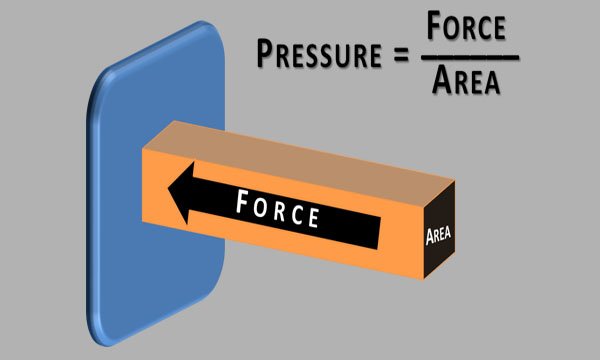Published by: BhumiRaj Timalsina
Published date: 24 Jan 2022

The total perpendicular force exerted by a body on the surface in contact is called thrust. Pressure is defined as the thrust per unit area of a surface. The SI unit of pressure is Pascal (Pa) which is Newton per square metre( N/m2). If ‘P’ is the pressure exerted by a body of area ‘A’ when force ‘F’ is applied then,
P = F/A

Pressure plays a significant role in our day to day activities. Sometimes we should increase pressure and sometimes we should decrease it. A drawing pin is broad at the thumb side but sharp and pointed at another end. It is done to reduce pressure at the thumb and to increase pressure on the drawing board. The force of our hand falls over a large area of the drawing pin and produces high pressure on the pointed edge of the pin. The effect of same force on different areas are different.
If ‘F’ be the force and ‘A’ be the area of the body then pressure exerted by the body is given by,
Pressure (P) = Force(F)/Area(A)
Or, P = F/A
From the above equation, we can conclude that,
Less pressure is exerted when a force acts over a large area of a surface and more pressure is exerted when the force acts on a small area of a surface. Same force can produce different pressure depending upon on the area over which it acts.
Example
A large brick of 10N occupies 1m2 surface area. Calculate the pressure exerted.
Solutions:
We have,
Force (F) = 10N
Area (A) = 1m2
Pressure = ?
According to the formula,
Pressure (P) = Force(F)Area(A)Force(F)Area(A)
Or, P = F/A
Or, P = 10/1
Or, P = 10 Pa.
∴ The pressure exerted by the brick is 10 Pa.